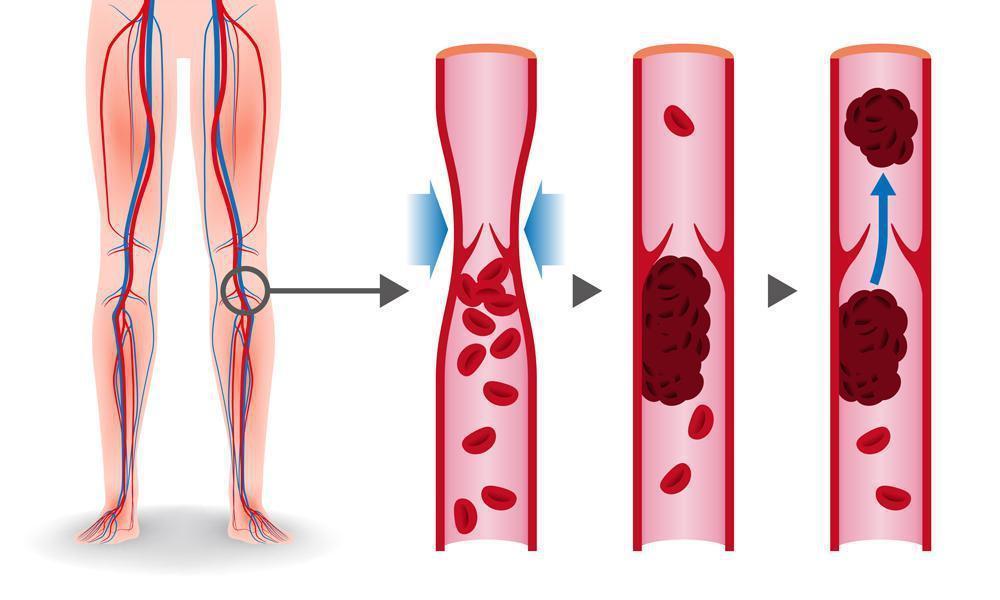When your leg starts hurting, your first thought is probably muscle strain from exercise, sitting too long, or an awkward movement. But sometimes, that discomfort can signal something far more serious a blood clot in the leg.
Distinguishing between a pulled muscle and deep vein thrombosis (DVT) can be tricky because the symptoms can overlap. However, knowing the difference can be life-saving.
In this guide, we’ll walk through Blood Clot in Leg Symptoms vs. Muscle Pain: How to Tell the Difference, so you’ll know when it’s safe to rest and when to call a doctor immediately.
Understanding Muscle Pain
Muscle pain, or myalgia, is incredibly common. It can be caused by:
-
Overuse during exercise
-
Minor injuries or sprains
-
Poor posture
-
Dehydration or electrolyte imbalance
Typical Muscle Pain Characteristics
-
Location: Often linked to a specific muscle group you recently used.
-
Onset: Appears shortly after activity or injury.
-
Sensation: Aching, stiffness, or soreness that eases with rest, stretching, or massage.
-
Duration: Usually improves in a few days to a week.
-
Trigger: You can often pinpoint the exact activity that caused it (e.g., gym workout, long walk).
Muscle pain is generally harmless, and simple home care — ice, heat, stretching — helps relieve it.
Understanding Blood Clots in the Leg (DVT)
A blood clot in the leg forms when blood thickens and clumps together inside a deep vein, blocking normal blood flow. This condition is called deep vein thrombosis.
It is dangerous because part of the clot can break off and travel to the lungs, causing a pulmonary embolism (PE), which can be life-threatening.
Key Risk Factors for Blood Clots in the Leg
-
Long periods of sitting or bed rest
-
Recent surgery or injury, especially to the legs or pelvis
-
Hormonal birth control or hormone therapy
-
Pregnancy and postpartum period
-
Obesity
-
Smoking
-
Family history of clotting disorders
-
Certain illnesses like cancer or heart disease
Blood Clot in Leg Symptoms vs. Muscle Pain: Side-by-Side Comparison
| Symptom | Muscle Pain | Blood Clot in Leg (DVT) |
|---|---|---|
| Pain Onset | After exercise, injury, or strain | Can appear without physical activity |
| Pain Type | Achy, sore, or sharp with movement | Persistent, throbbing, or cramping |
| Swelling | Rare, mild swelling if injured | Significant swelling, usually in one leg |
| Skin Changes | Normal skin color | Red, blue, or purplish skin; shiny appearance |
| Warmth | Not common | Area feels warmer than surrounding skin |
| Tenderness | Soreness when pressing muscle belly | Tenderness along the vein path, not just muscle |
| Improvement | Better with rest and stretching | Pain persists or worsens despite rest |
How a Blood Clot Feels Compared to Muscle Pain
Blood Clot in the Leg (DVT) Sensations
-
Tightness or fullness in the calf or thigh
-
Persistent cramping that doesn’t go away
-
Pain that gets worse when standing or walking
-
A feeling of heaviness or pressure in the leg
Muscle Pain Sensations
-
Localized soreness in the muscle fibers
-
Relief when stretching or massaging the area
-
Pain linked directly to movement
-
No major changes in skin color or temperature
When Muscle Pain Might Actually Be a Clot
If you have leg discomfort but also notice:
-
Unexplained swelling
-
Red or bluish skin
-
Warmth over the painful area
-
Pain that does not improve after several days of rest
… then you should consider the possibility of DVT and get medical help.
Why Confusion Between the Two is Dangerous
DVT can develop quietly, and its symptoms are easy to dismiss as minor muscle problems. However, untreated DVT can cause:
-
Pulmonary Embolism (PE): Sudden shortness of breath, chest pain, coughing up blood
-
Post-thrombotic Syndrome: Chronic leg pain, swelling, and skin changes
-
Permanent Vein Damage
Early detection greatly improves outcomes.
How Doctors Diagnose a Blood Clot
If DVT is suspected, a healthcare provider may use:
-
Ultrasound: Main imaging test to see the clot
-
D-dimer Test: Measures clotting activity in the blood
-
Venography: Uses dye and X-rays for detailed imaging
-
MRI or CT Scans: For complex cases
Treatment for a Blood Clot in the Leg
-
Anticoagulants (Blood Thinners): Prevent clot growth and new clots
-
Thrombolytic Therapy: Breaks down severe clots quickly
-
Compression Stockings: Improves blood flow and prevents swelling
-
Surgery or Filters: Used in high-risk cases to stop clots from traveling to the lungs
Prevention Tips
-
Stay Active: Move your legs regularly if sitting for long periods
-
Drink Water: Prevent dehydration, which thickens blood
-
Wear Compression Socks: Especially during flights or recovery periods
-
Manage Weight: Reduces strain on leg veins
-
Quit Smoking: Improves blood vessel health
-
Follow Post-Surgery Guidelines: Take medications as prescribed and avoid long bed rest
Conclusion
Muscle pain is usually harmless and goes away with rest. A blood clot in the leg, on the other hand, is a medical emergency that requires immediate attention.
By understanding Blood Clot in Leg Symptoms vs. Muscle Pain: How to Tell the Difference, you can make informed decisions about your health. If you ever have swelling, redness, warmth, or pain that doesn’t improve, don’t wait — see a doctor right away.
